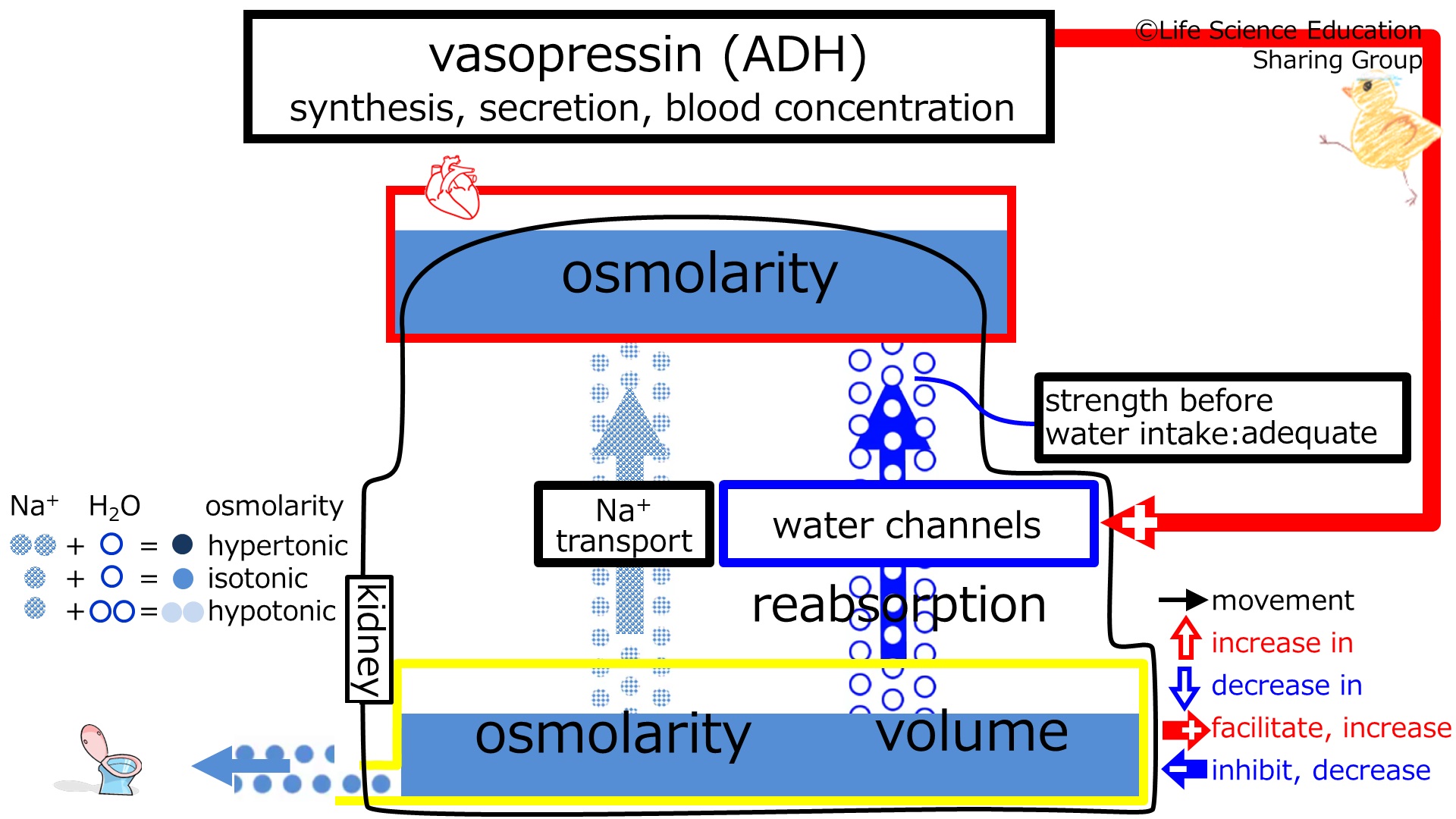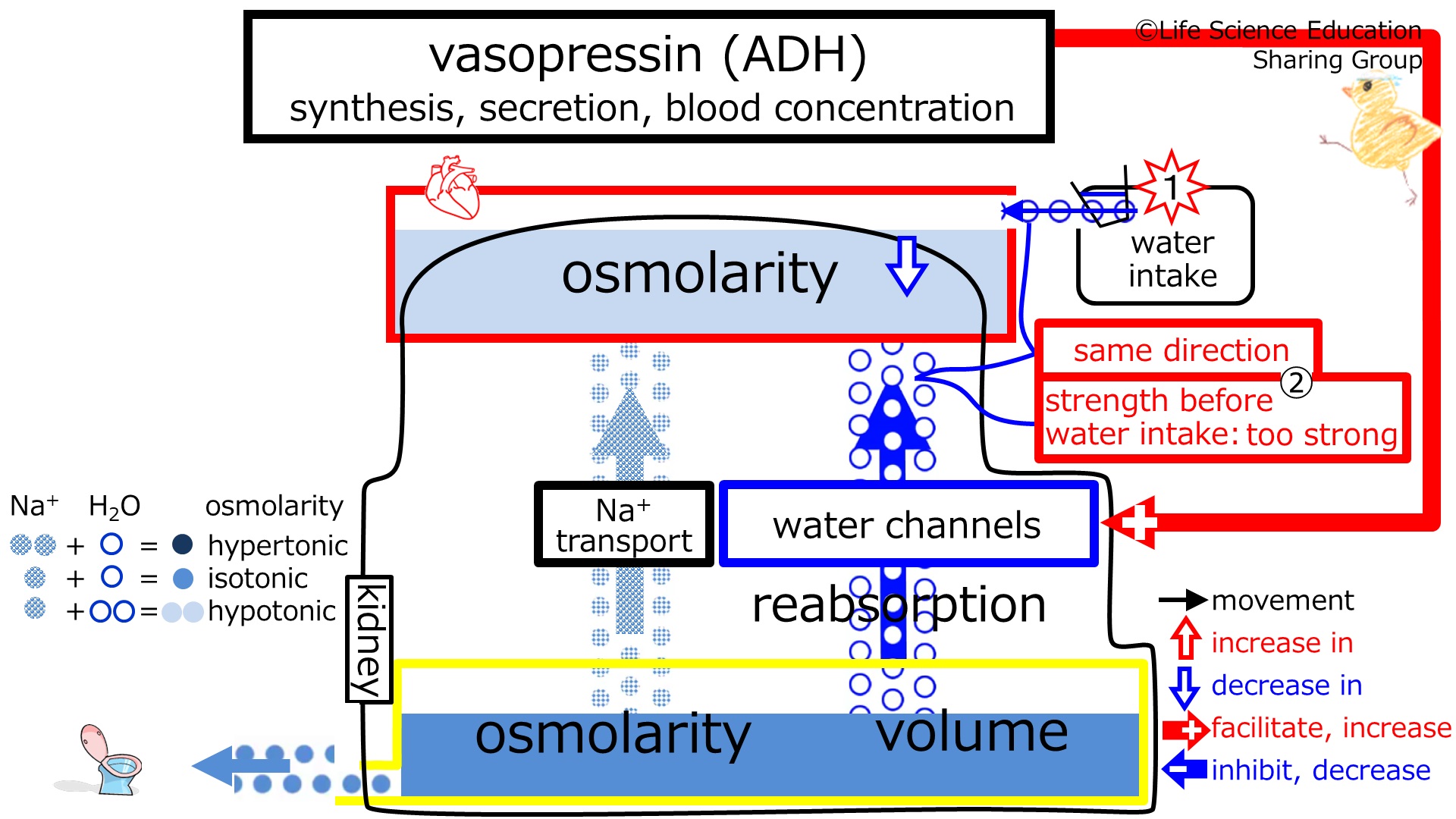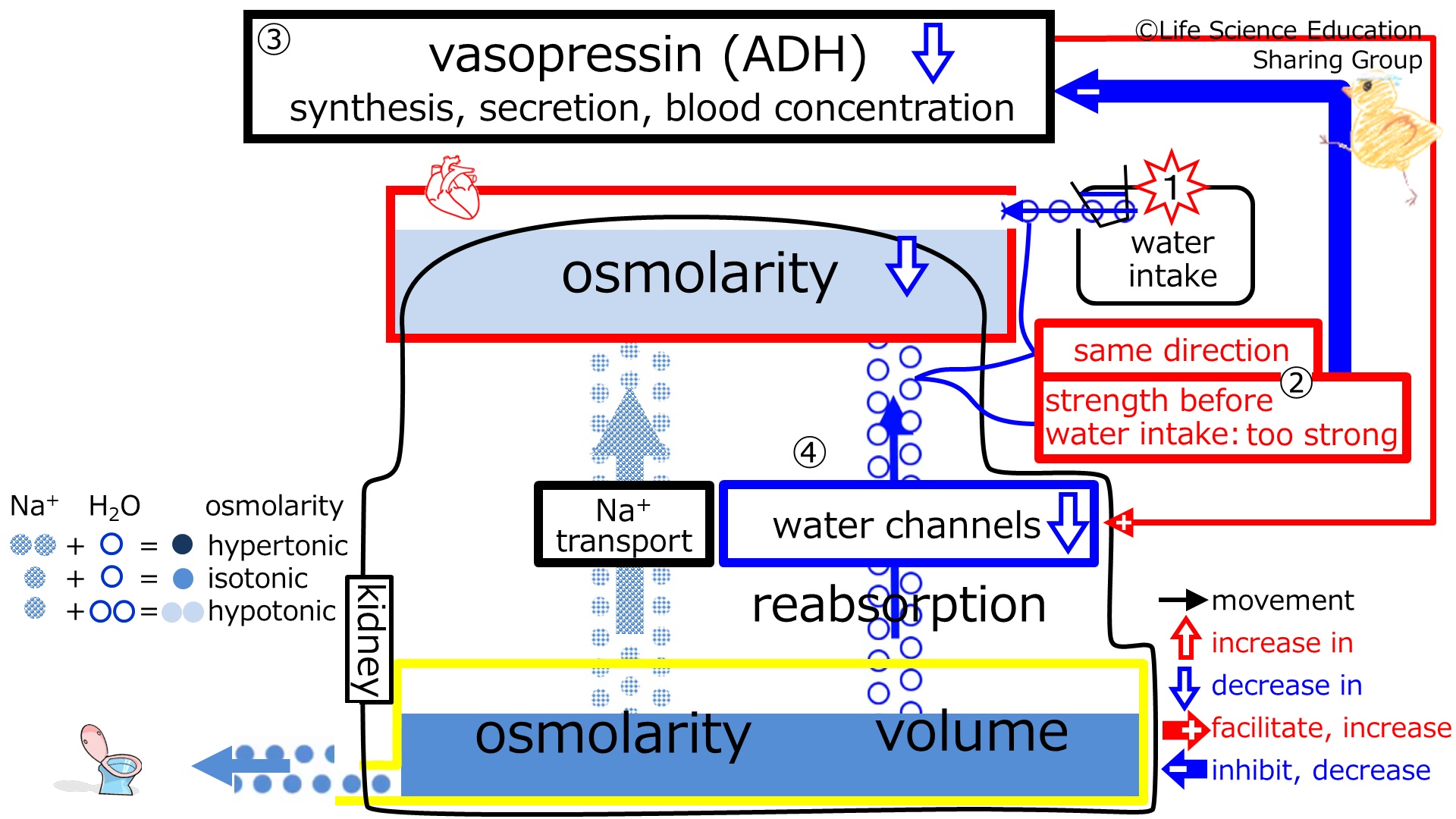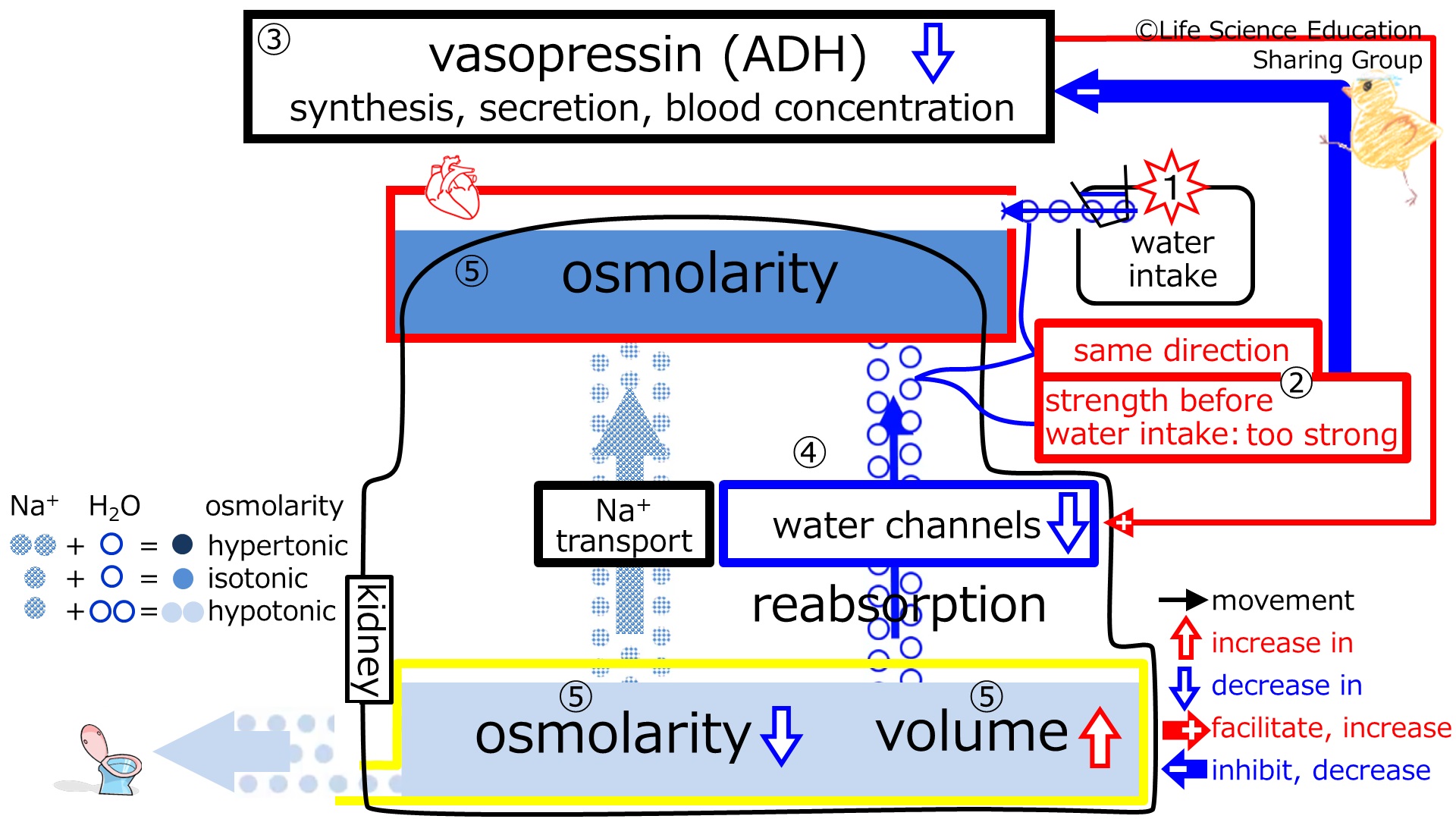SHolroydAtWeilCornellMedQatar/Endocrinology/VasopressinADH/ControlToWaterIntake
| With water intake the plasma osmolarity decreases, and negative feedback decreases the synthesis, secretion, and blood concentration of vasopressin (anti-diuretic hormone, ADH). |
video before water intake
Before water intake (at baseline), we will make the assumption that the subject is in homeostasis with adequate strength of the plasma osmolarity-decreasing effect of reabsorption (through the water channels, which are increased by vasopressin, ADH) as well as normal plasma and urine osmolarities (isotonic) and urine volume.
video just after water intake
Step 1: With water intake, water enters the plasma and osmolarity decreases (becomes hypotonic).
Step 2: This is in the same direction as the plasma osmolarity-decreasing effect of the reabsorption (through the water channels, which are increased by vasopressin, ADH). Thus, although the strength of the plasma osmolarity-decreasing effect of reabsorption (through the water channels, which are increased by vasopressin, ADH) was adequate before water intake (at baseline), this strength is now too strong (red) to reverse the low plasma osmolarity (hypotonic plasma) produced by water intake. Control by negative feedback is needed.
video just after the decrease in vasopressin (ADH) caused by water intake
Step 3: With the strength of the plasma osmolarity-decreasing effect of the reabsorption (through the water channels, which are increased by vasopressin, ADH) before water intake (at baseline) being too strong (red), the negative feedback decreases (blue) (the synthesis, secretion, and blood concentration of) vasopressin (ADH).
Step 4: The water channel-increasing effect of vasopressin (ADH) becomes weaker, which decreases the number of water channels. This decreases the reabsorption of water by the kidney.
video showing the changes in plasma and urine after the decrease in the reabsorption
Step 5: With the decrease in water reabsorption, concentrated (hypertonic) solution enters the plasma. This increases plasma osmolarity. This will lead to a reverse in the decreased plasma osmolarity from water intake (hypotonic plasma), increasing it towards normal (baseline) osmolarity (isotonic plasma). Because concentrated (hypertonic) solution leaves the tubule due to reabsorption, the fluid remaining in the tubule has a lower osmolarity (hypotonic). Also, with the decrease in water reabsorption, there is more water remaining in the tubule. Overall, the urine becomes more diluted (hypotonic) and higher in volume.
Challenge Quiz
With water intake, negative feedback increases decreases the synthesis, secretion, and blood concentration of vasopressin (anti-diuretic hormone, ADH).
With water intake, negative feedback increases decreases the number of water channels in the kidney.
With water intake, negative feedback increases decreases water reabsorption by the kidney.
With water intake, negative feedback increases decreases urine volume.
With water intake, negative feedback increases decreases urine osmolarity.
With water intake, negative feedback increases decreases plasma osmolarity.
With water intake, water enters leaves the plasma and the plasma osmolarity decreases increases . This is in the same direction as opposite direction to the plasma osmolarity-increasing plasma osmolarity-decreasing effect of the reabsorption (through the water channels, which are increased by vasopressin, ADH). The effect of the reabsorption would be too weak too strong prior to control by negative feedback. Negative feedback increases decreases the synthesis, secretion, and blood concentration of vasopressin (anti-diuretic hormone, ADH). This in turn increases decreases the number of water channels in the kidney causing increased decreased water reabsorption. The urine becomes more concentrated diluted and higher lower in volume. This decreases increases plasma osmolarity, returning to normal separating from normal .




